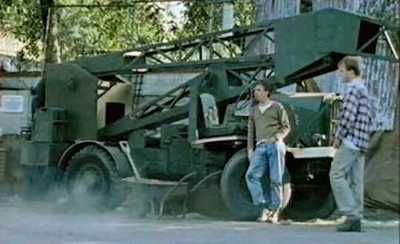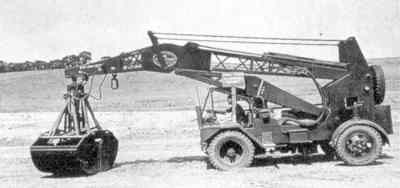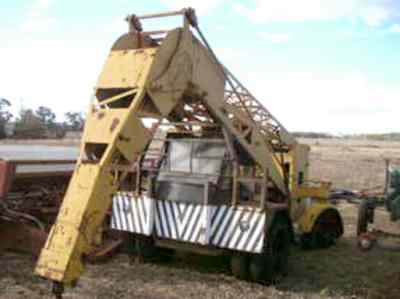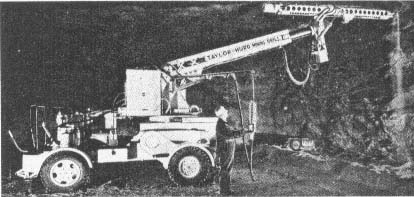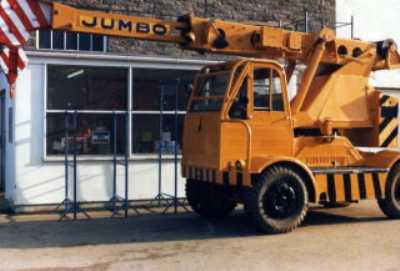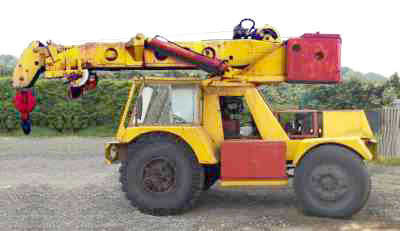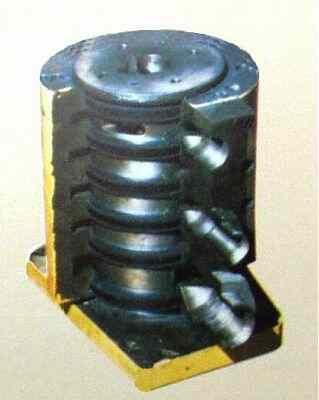|
|
||||||||||
|
|
||||||||||
| (click any image for larger view) THE TAYLOR STORY F. Taylor and Sons (Manchester) Limited was established in the days of horse drawn transport, expanding in the 1930s into vehicle body building and distributorships for commercial vehicles. The company had a factory at Pendleton, with a second works at Glazebury being established in 1945. In that year the company was awarded the contract for warehousing cotton imported from the USA under the Lend Lease scheme. The cotton was stored in bales in various redundant mills and the company decided to build a mobile crane to handle them. |
|||||||
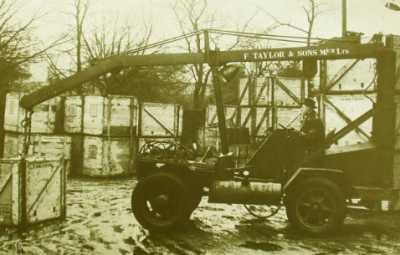 1. |
Using a tipper truck chassis, the company built
a non slewing crane with hydraulic derricking and hoisting gear. This machine, known to
the workforce as `The Coffin', became the
prototype for a new design of crane, introduced in 1945
and marketed under the name Taylor Hydracrane. |
||||||
The earliest Hydracranes 1946 were built on ex-war department chassis. When the supply of these ran out, Taylor's built their own chassis. During the 1950s, developments of the Hydracranes, notably the Taylor Jumbo Junior and the Jumbo the latter so called after its peculiarly articulating jib were sold extensively in the UK and overseas: all told about 1000 were delivered. |
|||||||
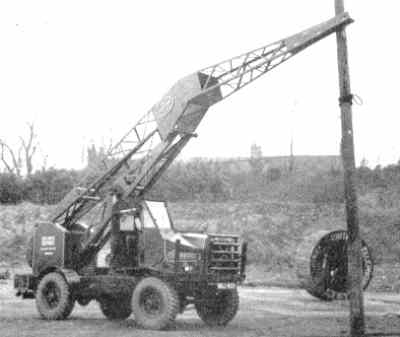 2. |
Hydracranes (left)
hydraulically-operated
non-slewing type mounted on a 4 wheel drive chassis. The unit
powered by a 24-h.p. petrol engine. Max Capacity 2 tons. (right)A unit being restored seen at a truck rally. |
3. |
|||||
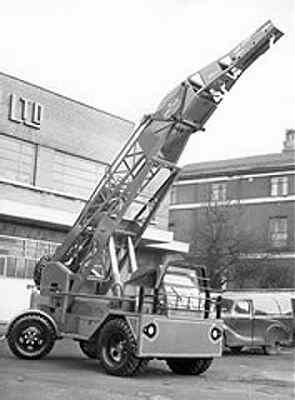 4. |
Hydracrane developed into a general purpose non-slewing lifting crane with rear wheel steering. These had no winding drum but lifted directly with the jib,
a hook or attchment being fixed to the arm. The nose drouped as the jib was lowered allowing the hook to reach the ground, thus it was nicknamed the Jumbo. The name stuck so it was adopted by Taylors. |
||||||
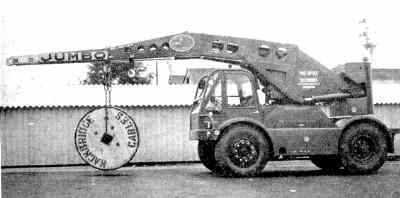 7. 7. |
The Jumbo 3 ton had articulated
jib mounted slewing ring. The slewing was limited to 220° as hydraulic
lines ran from the lorry into the slew unit. Normal road vehicle controls
are provided for road travel. Its max. lift was 3 ton but dropped to 17 cwt
with hook at maximum reach. The big development here is that the snoop end is hydraulically lowered and the hook position can be moved along the jib by a hydraulic ram. |
||||||
| These Jumbo cranes being small and maneuverable were used and adapted for mining. Taylors was also making specialist mining equipment such as this drilling machine. The use of hydraulic rams being used to position the drill as well as push it into the coal face |
8. |
||||||
| The logical extension of the mining machines was the use of the extending arms on a general purpose road vehicle. To start with on whet ever chassis was available the a purpose built unit. This process began with the series 43 the successor of the Jumbo. Mounted on a 4 x 4 chassis this had a single extending jib and was to usher the new wave of hydraulic cranes.(Image 10 below) The Taylor series 50 developed into the Coles Speedcrane in 1962 and as the Coles Hydra 10 laid the foundations for the telescopic cranes of the modern age. (Images 11 & 12 below) |
|||||||
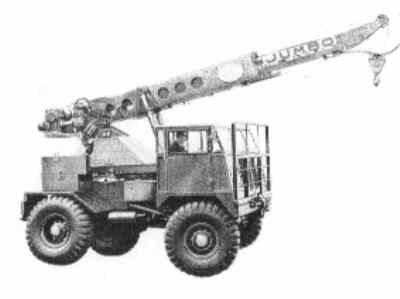 9. |
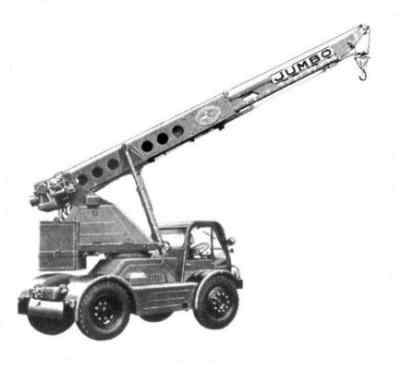 10. |
||||||
By 1959 the Series 50 Jumbo was well developed and when the Coles design team joined forces with Taylors they decided to develop this machine. This was eventually to become the Jumbo Speedcrane and subsequently the Coles Speedcrane. It was from this small beginning that all Coles hydraulic cranes were to spring from the eventual successors of the 1945 `Coffin' |
|||||||
|
To see how the Speedcrane was developed by Coles see the Spotlight section on the main homepage or to continue directly to that page by clicking here One of the most significant developments in the Taylor story was the introduction of the rotary coupling. Until that time, the cranes had 359 degree slewing capability, with hoses winding round the operator as he slewed. In 1956 a pillar device was invented round which the crane slewed. A sectional view of this device is shown right. This system has since been adopted by every other crane and excavator manufacturer. |
|
||||||
|
|
||||||||||
|
|
